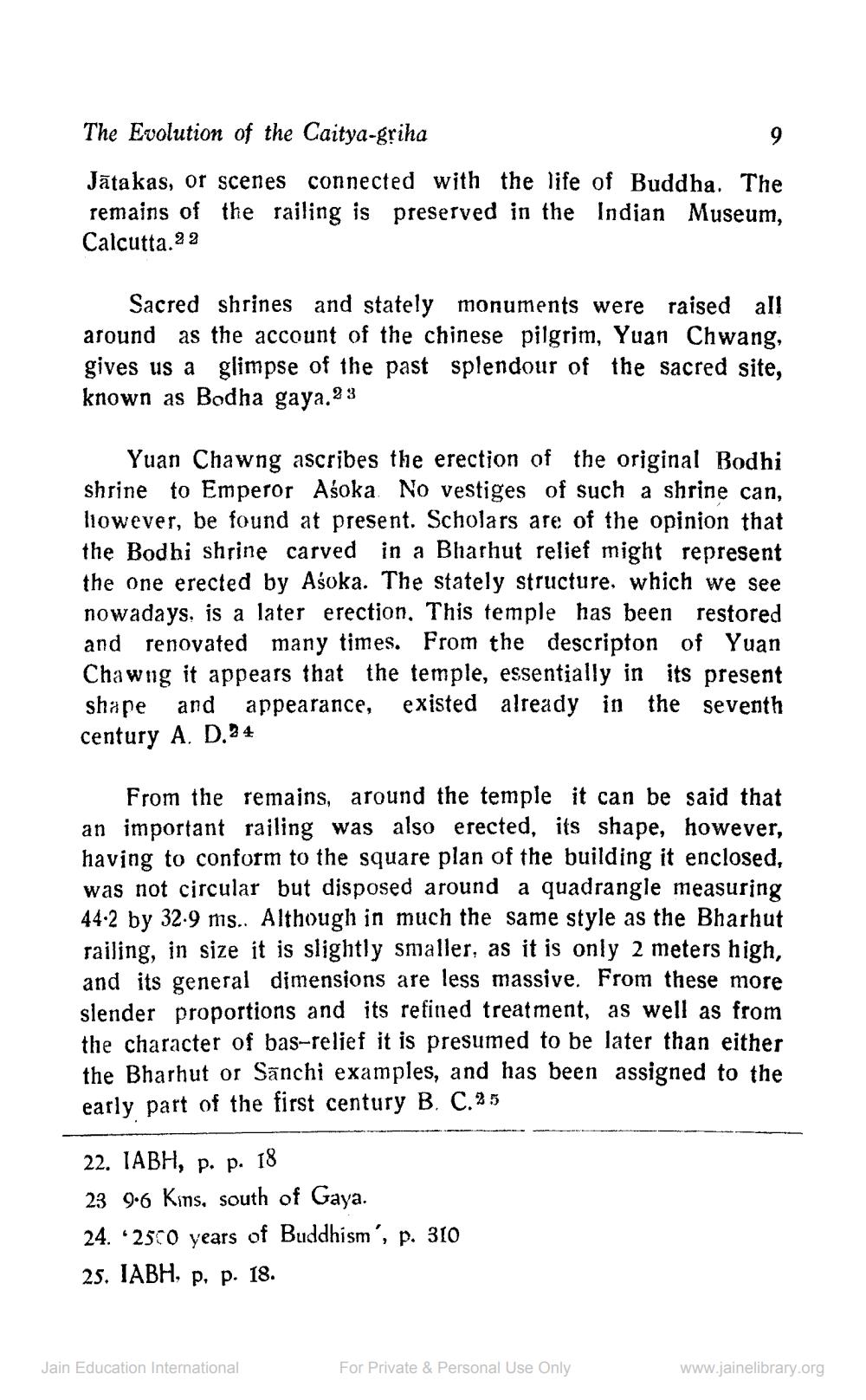________________
The Evolution of the Caitya-griha
Jātakas, or scenes connected with the life of Buddha. The remains of the railing is preserved in the Indian Museum, Calcutta. 22
Sacred shrines and stately monuments were raised all around as the account of the chinese pilgrim, Yuan Chwang, gives us a glimpse of the past splendour of the sacred site, known as Bodha gaya.23
Yuan Chawng ascribes the erection of the original Bodhi shrine to Emperor Aśoka No vestiges of such a shrine can, however, be found at present. Scholars are of the opinion that the Bodhi shrine carved in a Bharhut relief might represent the one erected by Aśoka. The stately structure, which we see nowadays, is a later erection. This temple has been restored and renovated many times. From the descripton of Yuan Chawng it appears that the temple, essentially in its present shape and appearance, existed already in the seventh century A. D.34
From the remains, around the temple it can be said that an important railing was also erected, its shape, however, having to conform to the square plan of the building it enclosed, was not circular but disposed around a quadrangle measuring 44.2 by 32.9 ms.. Although in much the same style as the Bharhut railing, in size it is slightly smaller, as it is only 2 meters high, and its general dimensions are less massive. From these more slender proportions and its refined treatment, as well as from the character of bas-relief it is presumed to be later than either the Bharhut or Sanchi examples, and has been assigned to the early part of the first century B. C.25
22. IABH, p. p. 18
23 9.6 Kims, south of Gaya.
24. 2500 years of Buddhism', p. 310
25. IABH, p. p. 18.
Jain Education International
For Private & Personal Use Only
www.jainelibrary.org




